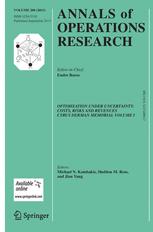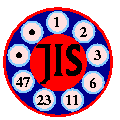19 (nineteen) is the natural number following 18 and preceding 20. It is a prime number.
22 (twenty-two) is the natural number following 21 and preceding 23.
51 (fifty-one) is the natural number following 50 and preceding 52.

Neil James Alexander Sloane is a British-American mathematician. His major contributions are in the fields of combinatorics, error-correcting codes, and sphere packing. Sloane is best known for being the creator and maintainer of the On-Line Encyclopedia of Integer Sequences (OEIS).
109 is the natural number following 108 and preceding 110.
144 is the natural number following 143 and preceding 145. 144 is a dozen dozens, or one gross.
900 is the natural number following 899 and preceding 901. It is the square of 30 and the sum of Euler's totient function for the first 54 positive integers. In base 10 it is a Harshad number. It is also the first number to be the square of a sphenic number.
The On-Line Encyclopedia of Integer Sequences (OEIS) is an online database of integer sequences. It was created and maintained by Neil Sloane while researching at AT&T Labs. He transferred the intellectual property and hosting of the OEIS to the OEIS Foundation in 2009. Sloane is the chairman of the OEIS Foundation.
In number theory, an odious number is a positive integer that has an odd number of 1s in its binary expansion.
240 is the natural number following 239 and preceding 241.
288 is the natural number following 287 and preceding 289. Because 288 = 2 · 12 · 12, it may also be called "two gross" or "two dozen dozen".
30,000 is the natural number that comes after 29,999 and before 30,001.
Arran Fernandez is a British mathematician who, in June 2013, became Senior Wrangler at Cambridge University, aged 18 years and 0 months. He is thought to be the youngest Senior Wrangler ever.

Queueing Systems is a peer-reviewed scientific journal covering queueing theory. It is published by Springer Science+Business Media. The current editor-in-chief is Sergey Foss. According to the Journal Citation Reports, the journal has a 2019 impact factor of 1.114.
Aronson's sequence is an integer sequence defined by the English sentence "T is the first, fourth, eleventh, sixteenth, ... letter in this sentence." Spaces and punctuation are ignored. The first few numbers in the sequence are:

Annals of Operations Research is a peer-reviewed academic journal published by Springer Science+Business Media. It was previously published by Baltzer Science Publishers. The journal publishes 24 issues a year that focus on the theoretical, practical, and computational aspects of operations research. It also publishes periodic special volumes focusing on defined fields of operations research.

In mathematics, the Bell triangle is a triangle of numbers analogous to Pascal's triangle, whose values count partitions of a set in which a given element is the largest singleton. It is named for its close connection to the Bell numbers, which may be found on both sides of the triangle, and which are in turn named after Eric Temple Bell. The Bell triangle has been discovered independently by multiple authors, beginning with Charles Sanders Peirce (1880) and including also Alexander Aitken (1933) and Cohn et al. (1962), and for that reason has also been called Aitken's array or the Peirce triangle.

Combinatorics, Probability and Computing is a peer-reviewed scientific journal in mathematics published by Cambridge University Press. Its editor-in-chief is Béla Bollobás.

Journal of Classification is a peer-reviewed academic journal published by Springer Science+Business Media. It is the official journal of The Classification Society. The journal publishes three issues a year on topics in the field of classification, numerical taxonomy, multidimensional scaling and other ordination techniques, cluster analysis, tree structures and other network models. Each issue typically comprises four sections: articles, short notes and comments, software abstracts, and book reviews.

Journal of Agricultural, Biological and Environmental Statistics (JABES) is a peer-reviewed academic journal published by Springer Science+Business Media. It is a joint publication of the International Biometric Society and the American Statistical Association. The journal publishes four issues a year composed of articles that introduce new statistical methods to solve practical problems in the agricultural sciences, the biological sciences, and the environmental sciences.







